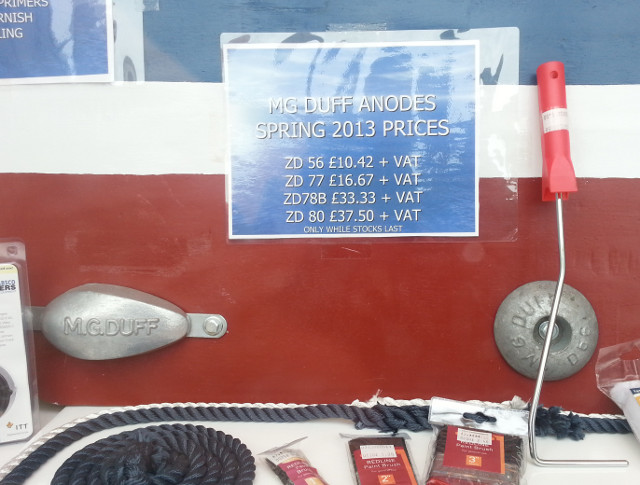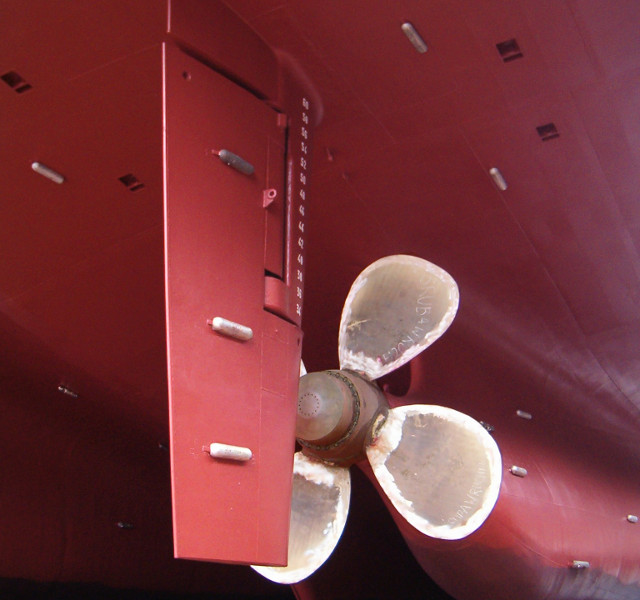Salt is a catalyst for the rusting process and therefore rusting is a major hazard for boats, ships and installations like oil rigs and offshore wind turbines.
Aside from painting with anti-rusting paint, one of the major methods of preventing rusting is the use of sacrificial anodes.

Sacrificial anodes for sale in the window of the Fishermen’s Mutual Association shop in Pittenweem.
Sacrificial anodes are made of a material more reactive* than the material they are designed to protect. This creates a difference in electrical potential that is in the opposite direction to what would normally be the case, and the sacrificial anode is eaten away instead of the material being protected.

A ship’s hull with mounted sacrificial anodes.
Sacrificial anodes are usually made from magnesium, zinc or aluminium; magnesium is used on-shore and in freshwater, and zinc and aluminium are used in salt water where resistance is lower.
* Technically they have a more negative electrochemical potential.
I have a friend who works on pipelines out in deserts in North Africa, they use the same idea to protect the pipelines.
Yes. To protect buried pipelines they use aluminium sacrificial anodes, e.g..